John Morgan’s ‘Usylessly’ celebrates the aesthetic of James Joyce’s pioneering novel
Usylessly by John Morgan is a piece of bibliographic and typographic sculpture, based on an exact replication of the 1922 Shakespeare and Company edition of James Joyce’s Ulysses
Ed Park - Photography
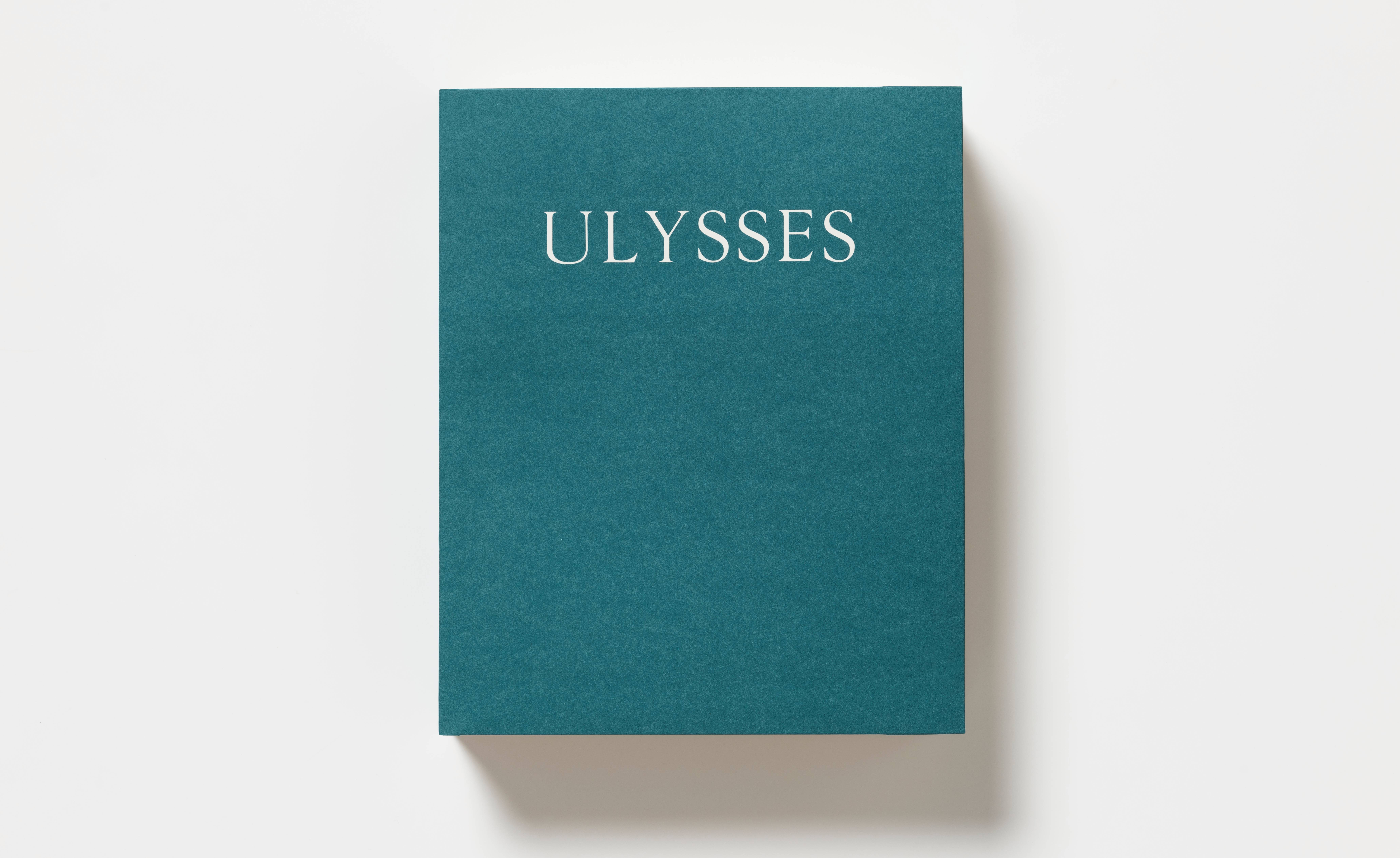
John Morgan studio has consistently pushed at the boundaries of typographical invention, working closely with creative clients to give visual life to a huge range of design projects.
John Morgan and his team have designed wayfinding for Tate Britain, redesigned the Book of Common Prayer for the Church of England, created the visual identity and signage for the 2012 Venice Architecture Biennale, and worked hand in hand with architects like 6a and David Chipperfield.
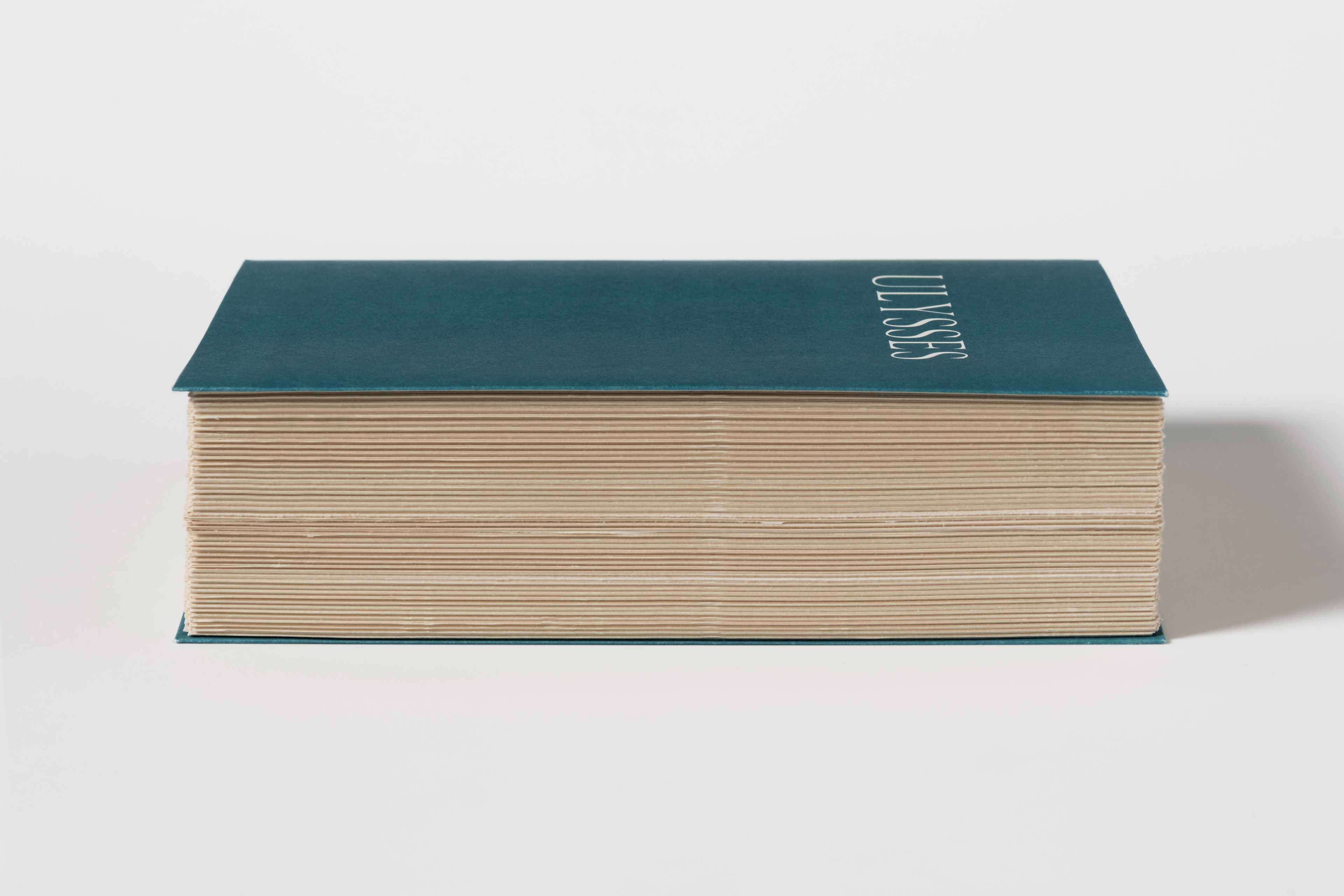
Since setting up the studio in 2000, Morgan has always maintained self-initiated side projects. These include the type foundry and independent publisher of artist’s editions and multiples, ABYME, which he set up with his collaborator Adrien Vasquez in 2017. When he’s not practising design, Morgan is professor of Design, Typography and Book Art at the Kunstakademie Düsseldorf.
Usylessly by John Morgan
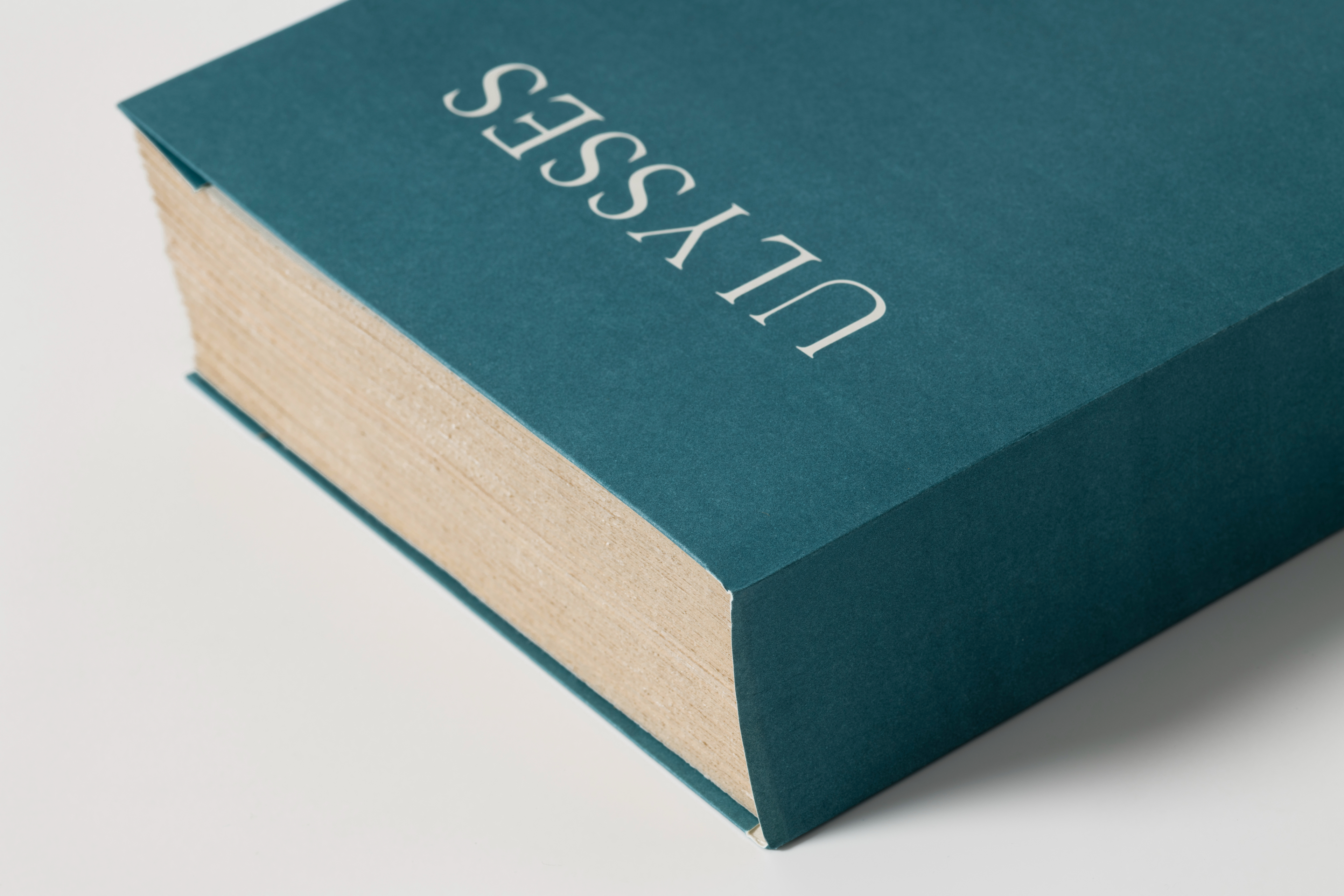
Usylessly is a new work by Morgan, a piece of bibliographic and typographic sculpture that is based on an exact replication of the 1922 Shakespeare and Company edition of James Joyce’s Ulysses – the first edition of the legendary experimental novel.
With the book’s centenary approaching, the designer has shaped this volume to celebrate the physical form of the book – in particular the blue, specifically requested by Joyce, and the way in which this particular shape has become so closely associated with the writing.
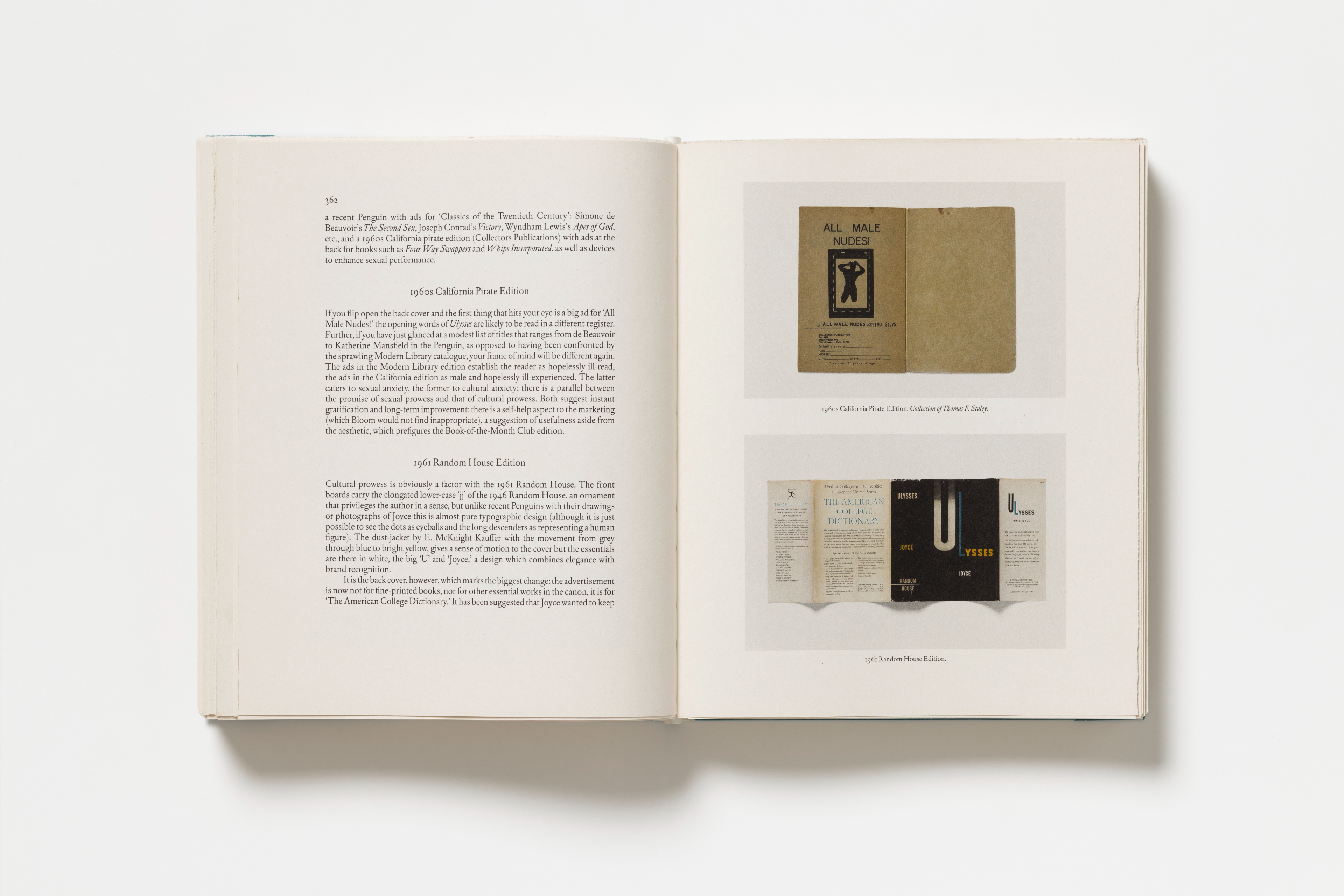
Usylessly exactly matches the specification of the Shakespeare and Company’s 1922 edition, so there are 736 pages in total. However, it contains just 64 pages of content; the rest of the book is left tantalisingly blank. This printed section consists of two essays, the first of which, ‘Re-Covering Ulysses’, was written by Edward L Bishop and originally published in 1994. Bishop chronicles Ulysses as a physical object, an idea explored in more detail by the other essay, ‘Ulysses Blue’. Bishop’s piece is in part about the search for a perfect blue, including a trawl through the expansive James Joyce Collection at Austin’s Harry Ransom Center.
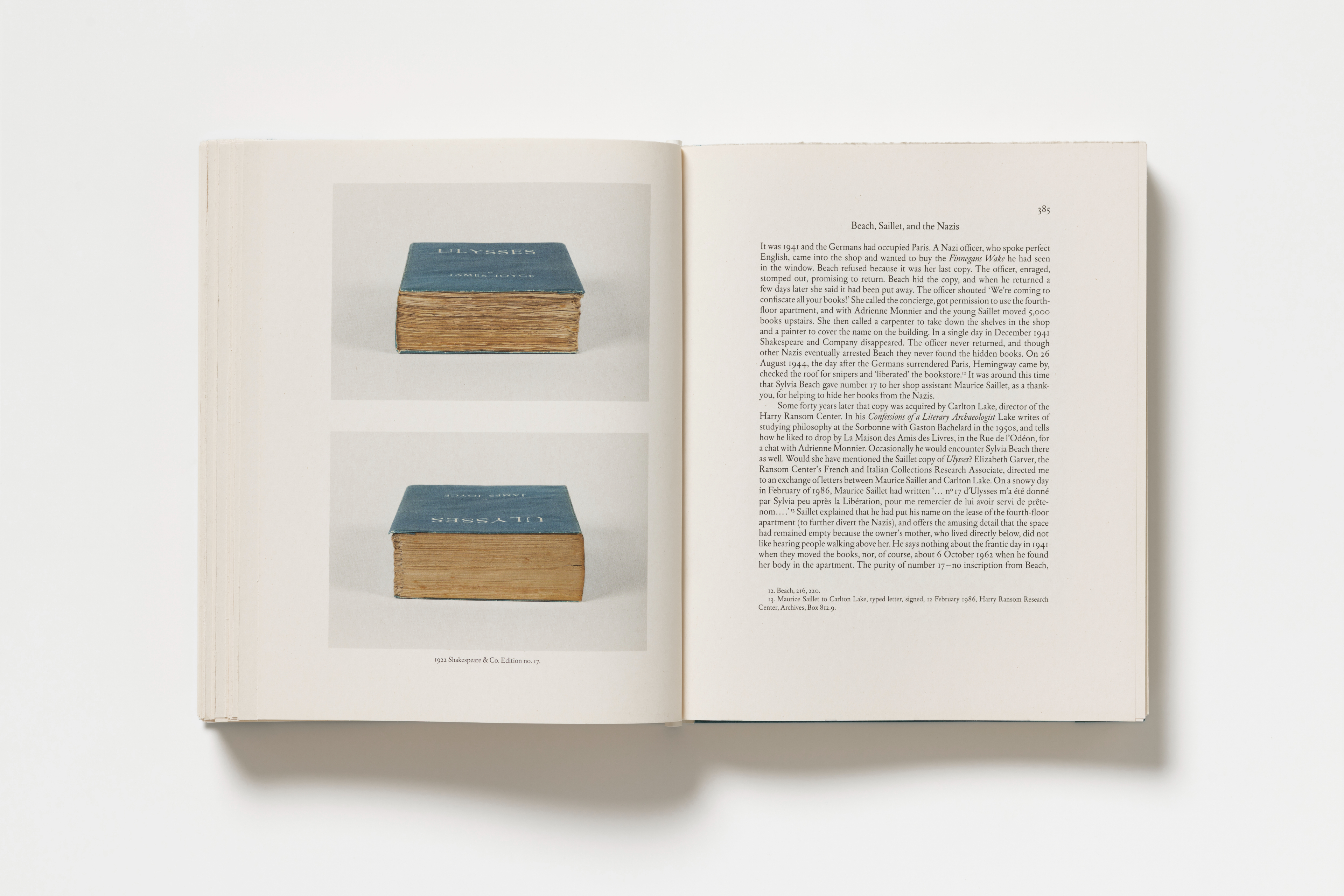
Ulysses has captivated and confounded in equal measure since its first publication, confirming Joyce as a pioneer of modernist literature. Usylessly plays with the designer’s strangely powerful relationship with the presentation of literature, and how different editions and design approaches can take on subtle but assertive new meanings over time. All too often, these meanings run counter to our modern expectations of enduring perfection.
Receive our daily digest of inspiration, escapism and design stories from around the world direct to your inbox.
‘Please be aware that the binding is delicate and the blue imperfect with some banding in the spirit of the 1922 edition,’ the book’s website notes. ‘The paper will crease and dent at the spine and elsewhere and show signs of use and deteriorate over time as a large paperback book will… some minor damage may still occur in shipping and handling, this is to be expected.’ It concludes: ‘Please note that the book is mostly blank, and does not contain the text of James Joyce’s Ulysses.’ Joyce would have been proud of this straightforward acknowledgement of a complex reality.
INFORMATION
Usylessly is published in a numbered edition of 500 copies, £55 + shipping
Available from Usylessly.com
Jonathan Bell has written for Wallpaper* magazine since 1999, covering everything from architecture and transport design to books, tech and graphic design. He is now the magazine’s Transport and Technology Editor. Jonathan has written and edited 15 books, including Concept Car Design, 21st Century House, and The New Modern House. He is also the host of Wallpaper’s first podcast.
-
 At last: a London hotel that’s great for groups and extended stays
At last: a London hotel that’s great for groups and extended staysThe July London Victoria, a new aparthotel concept just steps away from one of the city's busiest rail stations, is perfect for weekends and long-term visits alike
-
 Three new smartwatches showcase new frontiers in affordable timepiece design
Three new smartwatches showcase new frontiers in affordable timepiece designLong may you run: smartwatches from Withit, Kospet and OnePlus favour function and value above all else, demonstrating just how much the smartwatch has evolved in recent years
-
 Debuts, dandies, Demi Moore: 25 fashion moments that defined 2025 in style
Debuts, dandies, Demi Moore: 25 fashion moments that defined 2025 in style2025 was a watershed year in fashion. As selected by the Wallpaper* style team, here are the 25 moments that defined the zeitgeist